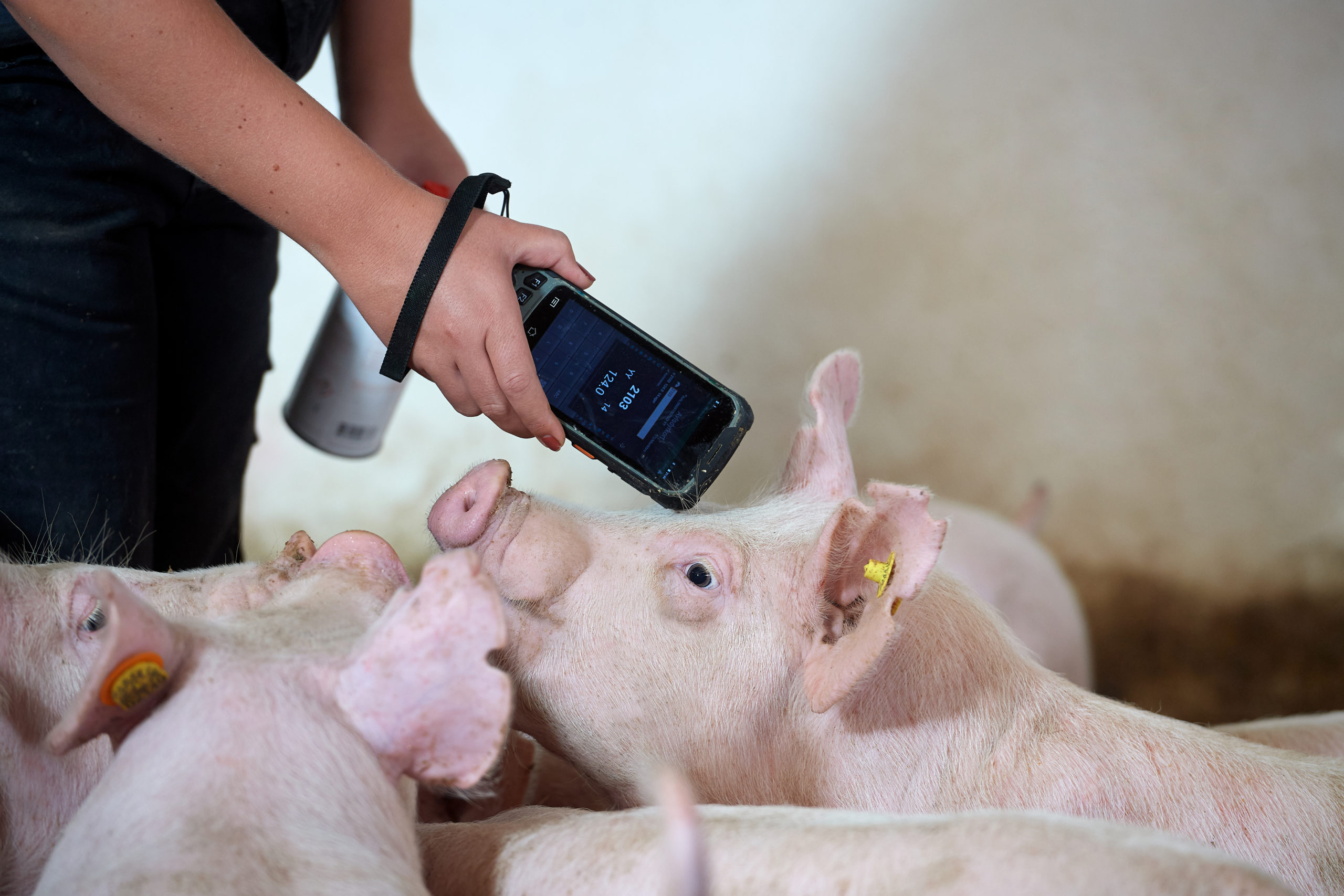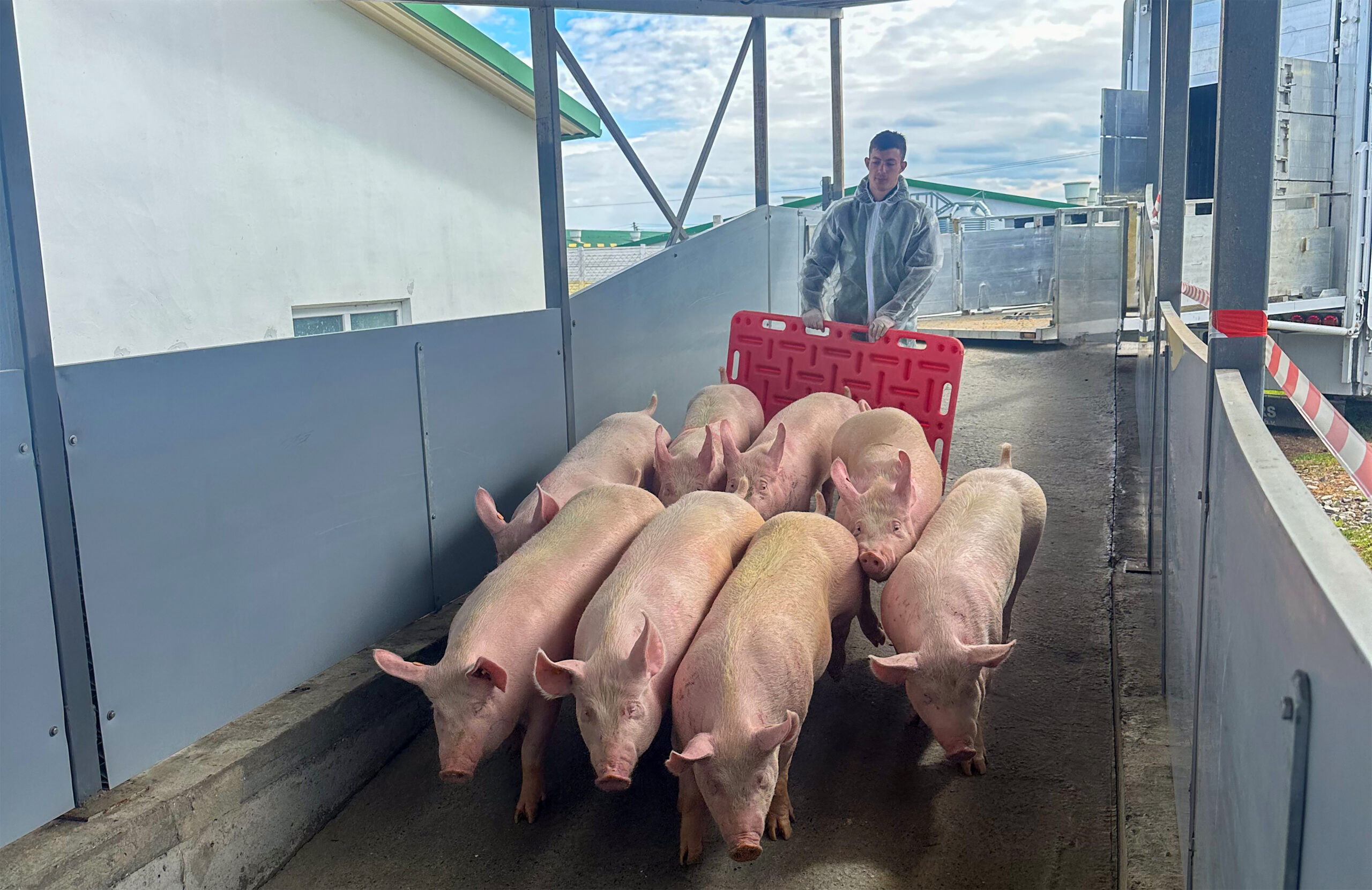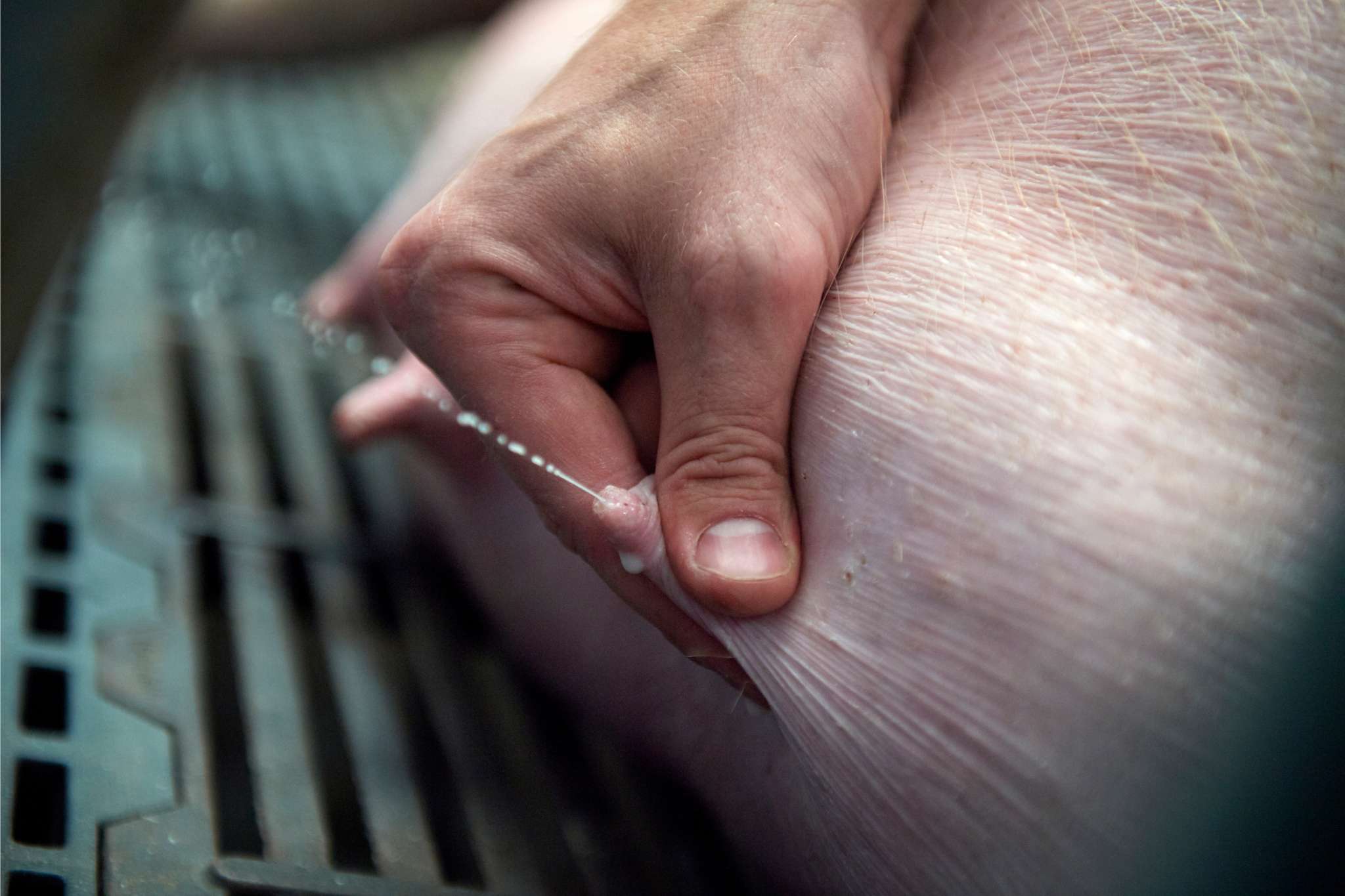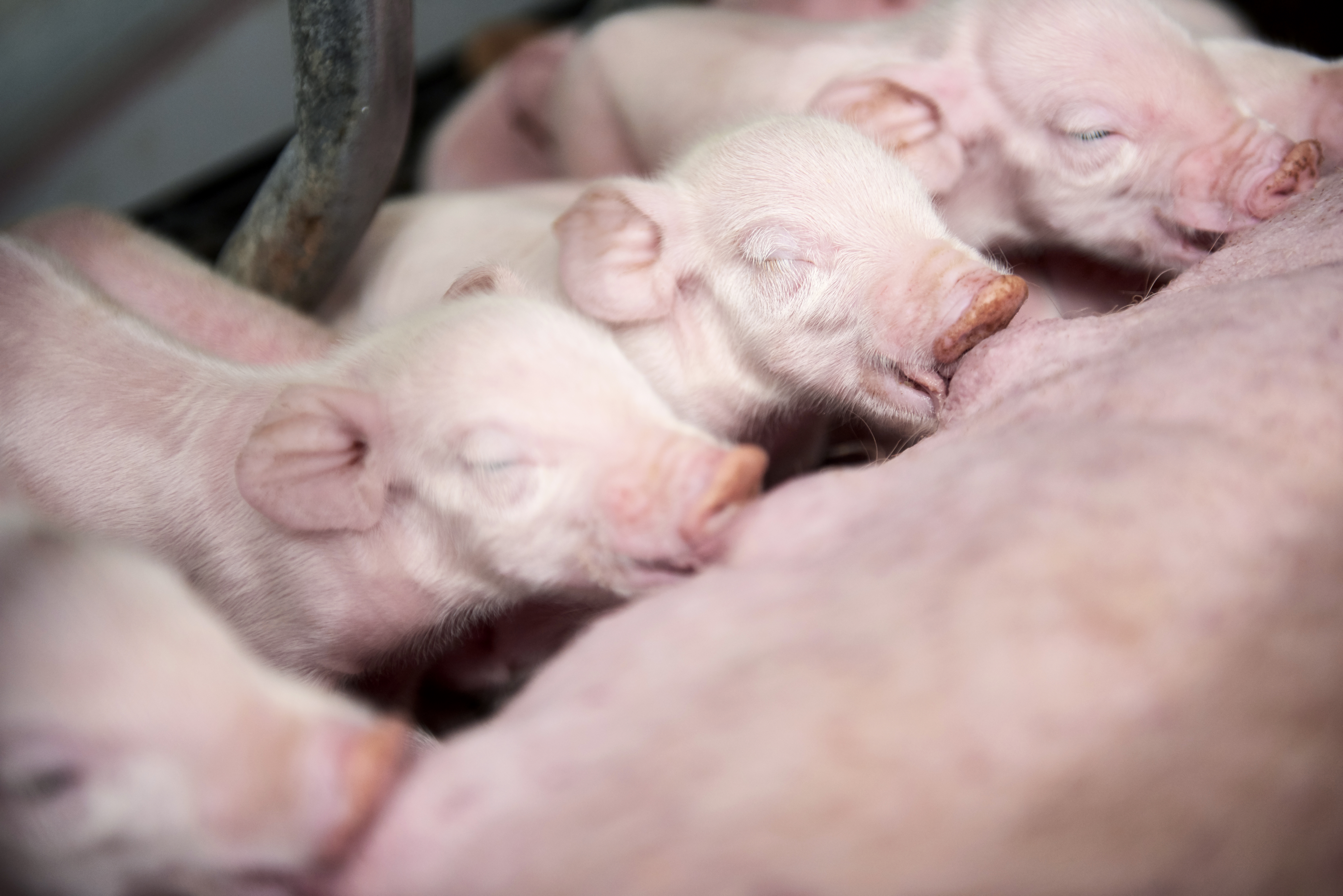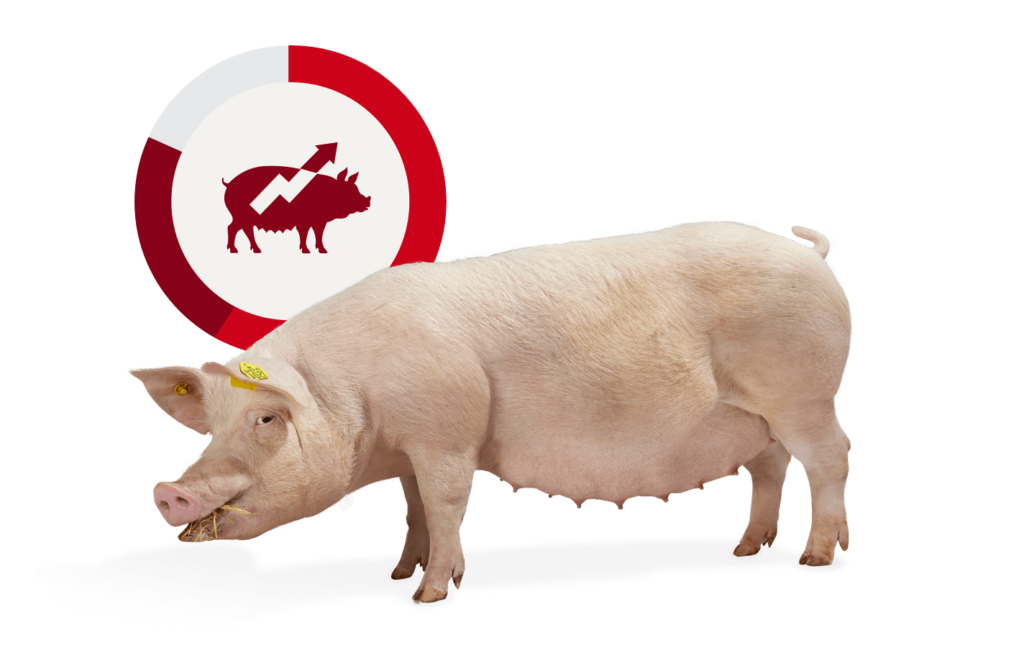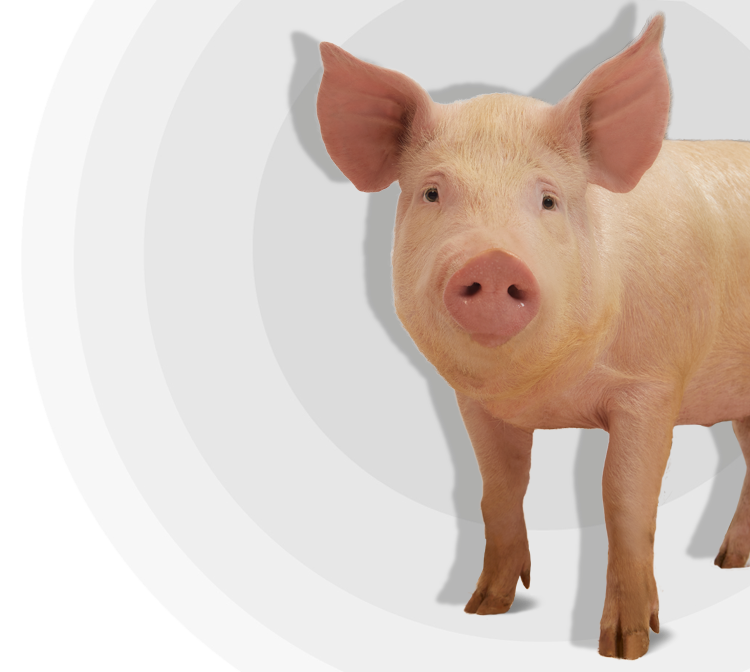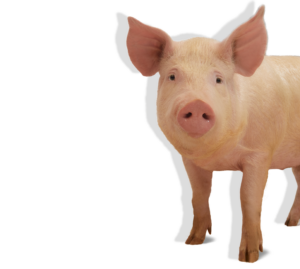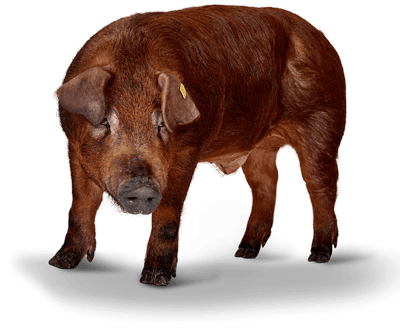Increased survival until slaughter has economic significance for you as a pig producer as well as social significance for animal health and welfare in the pig production in general. From a breeding perspective, survival is a complex trait, but research shows that it is possible to improve survival until slaughter through breeding.
A current research project investigates how genetics influence survival from birth until slaughter. The aim of the project is to determine whether we can achieve breeding progress for survival until slaughter – and whether there is a genetic correlation between survival until slaughter and the other traits in the DanBred breeding goal, as well as develop the corresponding breeding tools. A higher survival rate will improve your economic profit and contribute positively to animal health as well as animal welfare in the pig production.
|
The project is a collaboration between Center for Quantitative Genetics and Genomics at Aarhus University and Breeding & Geneticsat the Danish Agriculture & Food Council, Pig.The data used in this project is collected from DanBred breeding herds.
|
Survival until slaughter is heritable
Survival until slaughter is affected by several factors, such as feeding, surrounding environment, management, genetics, diseases etc. This makes the trait very complex when investigating it from a breeding perspective. Guosheng Su, Senior Researcher at Aarhus University, explains: “We monitor the pig all the way to slaughter, or until it dies, which is a very long time period, and makes data collection difficult compared to other traits, such as for example growth rate. However, we have determined that survival until slaughter is affected by the pig’s genetics, and thus, is heritable.”
Preliminary results have shown that the heritability for survival until slaughter is 1-2 %. Even though this is relatively low, Guosheng Su is positive that it is possible to achieve breeding progress for DanBred-pigs: “Although we see a low heritability for survival until slaughter, the estimated breeding values for the trait have relatively high accuracy. This has a direct effect on the possible breeding progress for the trait,” says Guosheng Su.
A broader outlook on survival
Guosheng Su is a recognised researcher, among other things, due to his study on litter size and piglet survival in 2002, which has had a huge impact on the development of LP5 (number of live piglets on day 5 after farrowing) in the DanBred breeding goal. He has a lot of experience with genetic analysis of DanBred genetics due to his many years of research at Aarhus University.
“Not many studies have focused on the pig’s survival during its entire life, compared to studies focused on piglet survival. Survival until slaughter is different to define, compared to for example LP5. When we look at LP5, we look at the sow’s genetic predisposition to get as many live piglets on day 5 as possible. For survival until slaughter, we also look at the individual pig’s genetic predisposition to survive as long as possible,” says Guosheng Su.
It is very difficult to collect data over a long period, where the pigs are raised in different sections, stables, and production stages – sometimes, the pigs may be moved or sold without any registration. Still, we work to improve survival until slaughter for DanBred pigs, as this will improve the animal health and welfare and increase economic gain for you as a pig producer.
“The next step in this project is to investigate the genetic correlations between survival until slaughter and the finisher traits in the DanBred breeding goal. And to develop and evaluate breeding plans that can improve pig survival efficiently. When a new trait is implemented in the breeding goal, it is very important to consider how the trait is correlated with other traits to ensure maximum long-term breeding progress,” concludes Guosheng Su.
|
What is a heritability?Heritability of a trait is a statistical term for how much of the variation in the trait is due to genetics rather than environmental factors.How does the accuracy effect a breeding value?The accuracy of an estimated breeding value indicates how well the estimation represents the true breeding value. It expresses the probability of how correctly the breeding value is calculated.
|

